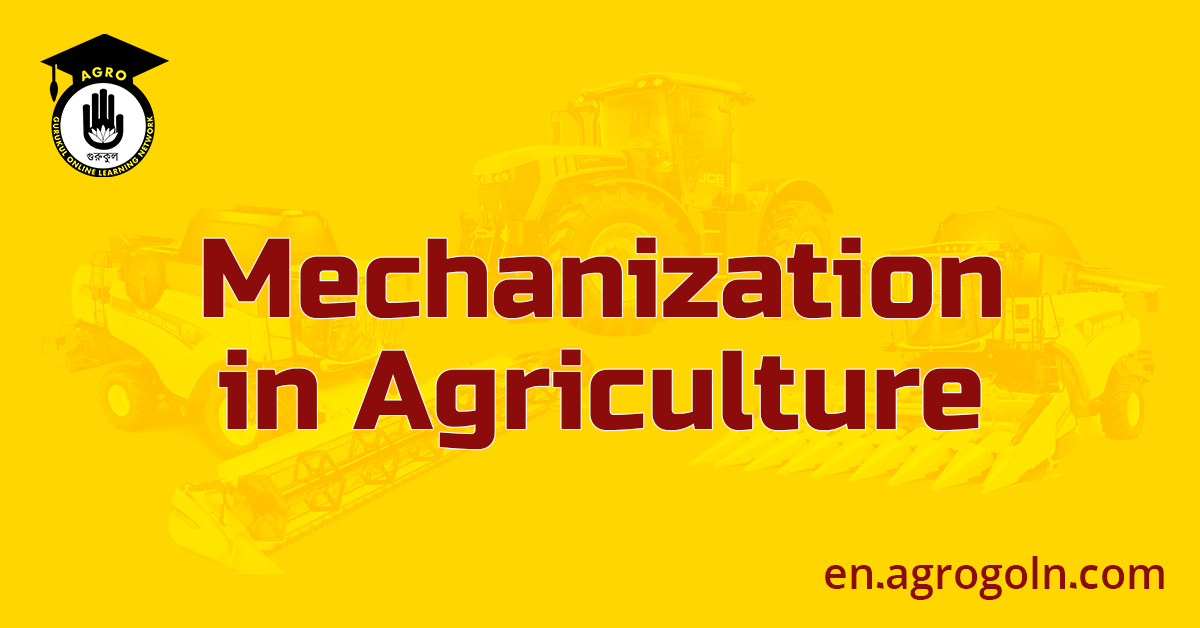Agriculture is the backbone of human civilization, providing the sustenance and resources necessary for our survival and progress. For millennia, farming was a labor-intensive and time-consuming endeavor, with farmers relying on traditional tools and manual labor to cultivate the land. However, the advent of mechanization in agriculture marked a significant turning point in the history of farming. Mechanization brought about a revolution in the way we grow crops and raise livestock, increasing efficiency, productivity, and sustainability in agricultural practices.
Table of Contents
Mechanization in Agriculture

The Evolution of Agricultural Mechanization:
The roots of agricultural mechanization can be traced back to ancient civilizations, where rudimentary tools such as plows and sickles were used to till the soil and harvest crops. Over time, these tools evolved, and with the industrial revolution in the 18th and 19th centuries, mechanization in agriculture gained momentum.
Steam-powered machinery, such as steam engines and traction engines, replaced animal and human labor in tasks like plowing and threshing. The internal combustion engine revolutionized agriculture in the early 20th century, enabling the development of tractors and other powered agricultural machinery.
Advantages of Agricultural Mechanization:
- Increased Productivity: Mechanization allows farmers to perform tasks more efficiently and on a larger scale, resulting in increased crop yields and higher production levels.
- Time Savings: Mechanized equipment significantly reduces the time required for planting, harvesting, and other agricultural operations, allowing farmers to focus on other essential tasks.
- Labor Savings: Agricultural machinery reduces the dependency on manual labor, which can be scarce and costly in many regions. It also mitigates the physical strain on farmers.
- Precision Farming: Mechanization enables precision agriculture, where farmers can precisely control the application of inputs such as fertilizers and pesticides, optimizing resource use and reducing environmental impacts.
- Improved Quality: Mechanized equipment ensures consistent and uniform operations, leading to improved product quality and marketability.
- Year-Round Cultivation: With mechanization, certain tasks can be performed year-round, allowing for multiple harvests and increased production.
- Sustainability: Mechanization can contribute to sustainable agriculture by reducing waste, conserving resources, and supporting eco-friendly practices.
Key Mechanized Agricultural Practices:
- Mechanized Planting: Tractor-mounted seed drills and planters enable precise seed placement, spacing, and depth, improving seed germination and reducing wastage.
- Crop Spraying: Tractor-pulled or self-propelled sprayers are used to apply fertilizers, pesticides, and herbicides, ensuring even and targeted distribution.
- Mechanical Harvesting: Combine harvesters and reapers have replaced manual harvesting methods, dramatically increasing harvesting efficiency and reducing labor requirements.
- Irrigation Systems: Automated irrigation systems, such as center-pivot sprinklers and drip irrigation, provide controlled water distribution, reducing water wastage and improving crop health.
- Animal-Powered Mechanization: In some regions, animals are still used for mechanized agriculture, such as plowing with oxen or horses.
- Post-Harvest Processing: Modern machinery is used for cleaning, sorting, and processing harvested crops, enhancing their market value and shelf life.
Challenges and Concerns:
While agricultural mechanization has brought numerous benefits, it also comes with challenges and concerns that need to be addressed:
- High Costs: Purchasing and maintaining agricultural machinery can be costly, especially for small-scale farmers in developing countries.
- Skills and Training: Operating complex machinery requires specialized skills and training, which may not be readily available in some regions.
- Environmental Impact: Intensive mechanization can lead to soil compaction and increased fuel consumption, contributing to environmental degradation.
- Small-Scale Farming: Mechanization may not always be feasible or suitable for small-scale farming operations.
- Dependency on Fossil Fuels: Many agricultural machines rely on fossil fuels, contributing to greenhouse gas emissions and climate change.
Conclusion:
Agricultural mechanization has undoubtedly transformed the way we grow crops and raise livestock. It has increased productivity, reduced labor demands, and enabled precision farming practices. Mechanization has played a crucial role in feeding a growing global population and supporting economic development.
However, as we embrace mechanization, we must be mindful of its potential drawbacks and strive for sustainable practices. Balancing the benefits of mechanization with environmental concerns, economic considerations, and the needs of small-scale farmers will be essential for a thriving and sustainable agricultural future. Mechanization, when utilized responsibly and in harmony with nature, will continue to be a powerful tool in ensuring food security and prosperity for generations to come.
